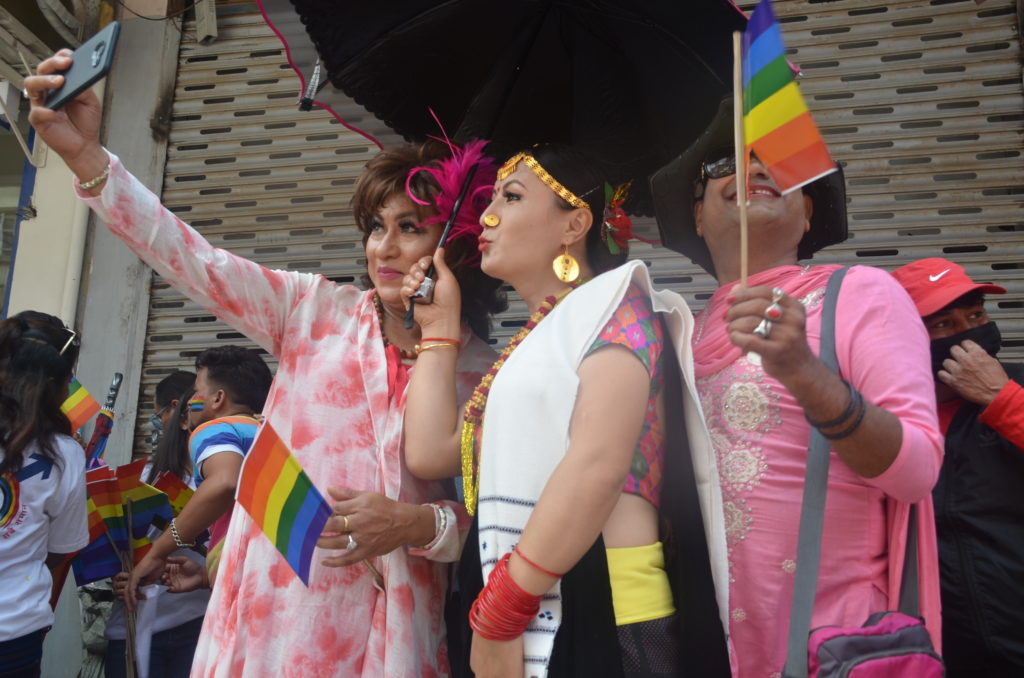The festival of “Gai Jatra” is one of the oldest and most unusual of the many festivals celebrated by the Hindus/Buddhists of Kathmandu Valley. Some say the custom goes back more than a millennium, to the time of the Licchavi kings. Falling on the day after Janai Purnima, the full moon day of August, Gai Jatra is a day for remembering those who have died in the past year. In addition to praying for their departed loved ones, family and friends of the deceased commemorate them in great processions, which wind their way through the streets of the ancient Newar towns of Bhaktapur, Patan, Kathmandu, Pokhara, Bharatpur, Bandipur, Gorkha and Dhulikhel.

Regardless of its associations with the dead, the festival procession is not a dour or solemn event. In fact, there is a great deal of merry-making connected with it. Many of the participants wear outlandish costumes. Traditionally, a good number of the young Newar men in the procession dress in women’s clothing. Over the centuries, the Gai Jatra Festival developed a second purpose. In the days when political expression of any kind was outlawed, Gai Jatra was the day when ordinary citizens could vent their frustrations through political and social satire, without fear of reprisal from the rulers. Given this history, Gai Jatra seemed to be a ready-made occasion for the Blue Diamond Society (BDS), Nepal’s leading human rights an dpublic health organization working for the lesbian, gay, bisexual, transgender and intersex (LGBTI) community, to stage Nepal’s Pride march.

Hence to give continuity of the program and to widen its area of presence in the country, with the theme: “Bringing Friends and Families Together for Solidarity towards Equality, Protecting Mountain Ecosystems and Promoting ‘Visit Lumbini Year 2012’ in Nepal” and to commemorate those loved ones who have passed away during the last year, BDS once again organized its annual event in Pokhara, an enchanting city nestled in a tranquil valley fo western Nepal with its stunningly beautiful mountain views and lakes and the most popular tourist destination. The Pride march was held on August 3, 2012. Apart from sexual and gender minorities, various national and international participants took part in the program in their traditional attire.
This annual festival has become one of BDS’s premier events and draws crowds of local supporters as well as tourists to join in on the fun and enjoyment of the festivities. ALthough BDS has been celebrating this unique festival for the last 10 years, it has been especially promoting it as an international event for the last two years.
There was a candlelit memorial in memory of those LGBTI people and activists who have died in the past year, and we also held a candlelight memorial in honor of the victims of the Seti River flood, triggered by a global warming induced avalanche on Machhapuchhre mountain last month. Well wishers showed full support by standing in solidarity with the community people during the candlelit memorial.

Hundreds of gay, lesbian and transgender people marched with supporters in Pokhara, a lake city in western Nepal. The supporters danced, chanted slogans and marched around the city to spread their rights and awareness campaign outside the Kathmandu Valley where it has been confined for the most part over the last decade. The rally was led by the pioneer of the gay rights movement in Nepal, Sunil Babu Pant and human rights activists and HIV/AIDS workers, followed by musical bands drawing the local people to the streets with music-blaring floats with sexual and gender minoriteis from five development regions who wore saris with bright red, pink and yellow colours. There was Lakhe dance (traditional dance by a man in mask and cross dressing influenced by Tantra-ism) and comedy performances on the current political situation in Nepal brought by LGBTI groups from all five regions.
The program showed a magnificent collection of activists and LGBTI people from various regions depicting the rich national cultural heritage. It was an impressive success that showed the visibility of the LGBTI community and others who expressed their solidarity.
